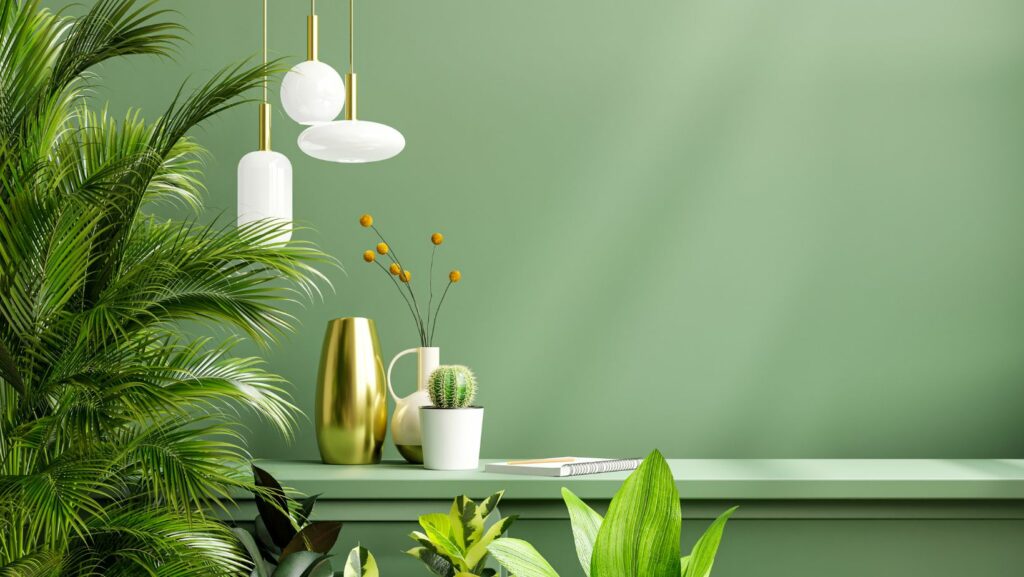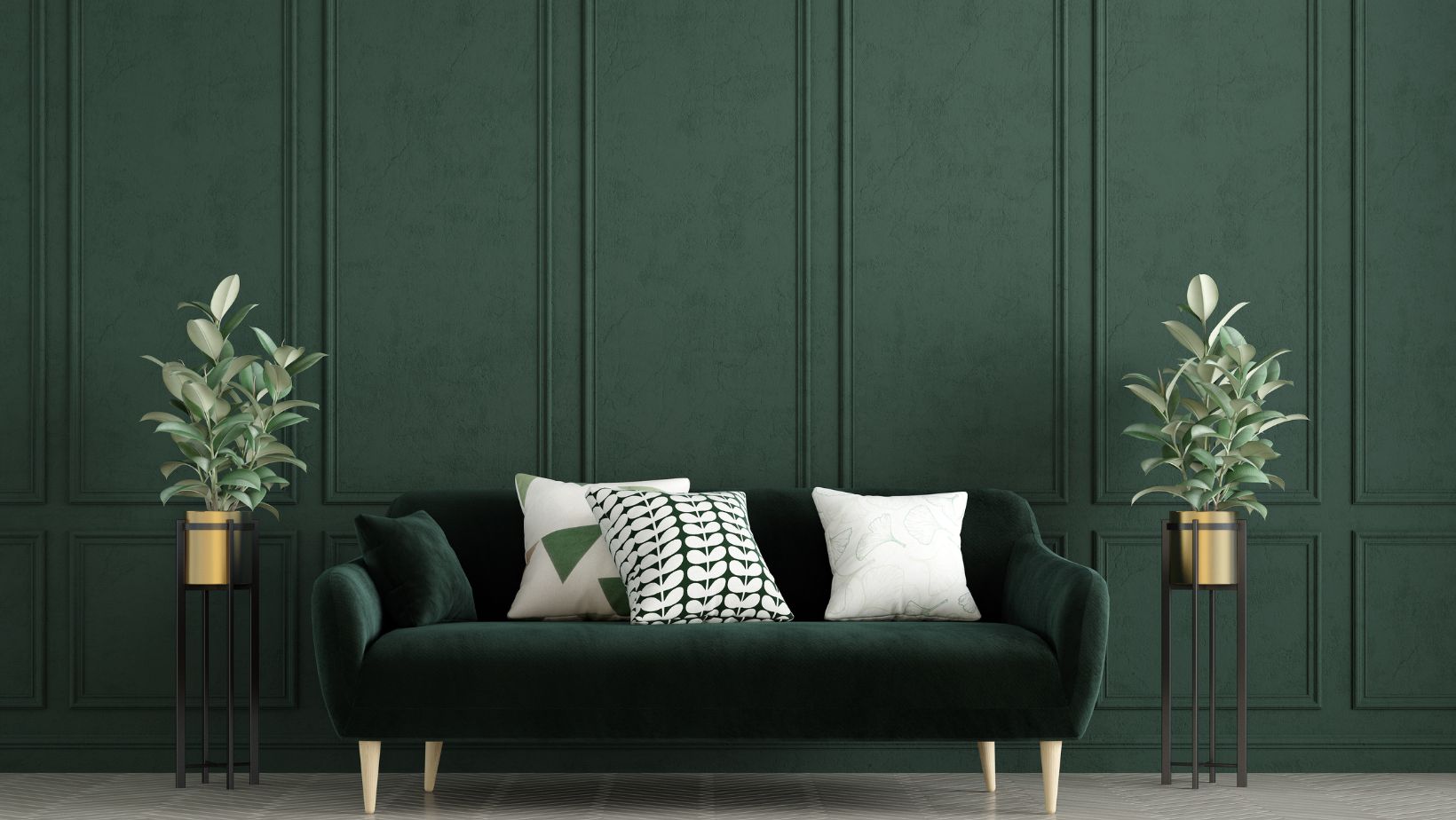Key Takeaways
- Wall Design Matters: Home wall design significantly impacts the ambiance and aesthetics of a space, offering opportunities for personal expression and enhanced atmosphere.
- Key Design Elements: Effective wall design incorporates color, texture, proportion, pattern, and lighting to create a balanced and inviting environment.
- Popular Styles: Familiarize yourself with various wall design styles—like modern minimalist, rustic charm, and industrial chic—to find one that aligns with your personal taste.
- Material Choices: Utilize diverse materials such as paint, wallpaper, wood panels, and stone accents to achieve desired aesthetics and functionalities in wall design.
- Planning is Essential: Thoughtful planning, including assessing space, selecting colors, and incorporating art, is crucial for effective home wall design implementation.
- Mood Setting with Color: The choice of colors can evoke specific feelings, influencing the overall mood of a room, making it essential for homeowners to select colors that complement their space.
Home wall design is more than just a backdrop; it sets the tone for every room. With the right choices, walls can transform a space from ordinary to extraordinary, reflecting personal style and enhancing the overall ambiance. Whether it’s through color, texture, or art, the walls of a home offer endless opportunities for home decor creativity.
As homeowners seek ways to express individuality, innovative wall designs are gaining popularity. From bold statement walls to subtle textures, these design elements play a crucial role in creating an inviting atmosphere. Understanding the latest trends and techniques can help anyone elevate their living space, making it not just a home, but a true reflection of who they are.
Home Wall Design
Home wall design significantly influences the aesthetics of a living space. It contributes to the overall ambiance by allowing homeowners to showcase their unique style through various design choices.
Importance of Wall Design in Home Aesthetics
Wall design plays a crucial role in defining the atmosphere of a room. A well-designed wall can enhance light, create focal points, and influence moods. Homeowners often choose colors that evoke specific feelings; for example, blues create calm, while yellows add warmth. Textures such as rough plaster or smooth paint can add depth and dimension. Art and decor elements further personalize wall space, allowing expression of individuality and taste.
Key Elements of Effective Wall Design
Effective wall design encompasses several key elements:
- Color: Choosing the right color sets the foundation for a room’s mood. Neutral tones work well for creating a versatile backdrop.
- Texture: Incorporating various textures—like wallpaper, wood paneling, or exposed brick—adds visual interest and depth.
- Proportion: Scaling wall elements correctly ensures balance. Large artwork or shelves can enhance spacious rooms, while smaller pieces suit cozy areas.
- Pattern: Utilizing patterns, such as stripes or geometric shapes, can energize a space. Patterns should complement the room’s overall design and color scheme.
- Lighting: Thoughtful placement of light fixtures can highlight wall features. Accent lighting draws attention to artwork or architectural details.
Understanding these elements equips homeowners with the knowledge to create harmonious and inviting wall designs.
Popular Home Wall Design Styles
Home wall design styles vary widely, each presenting unique characteristics and aesthetics. Understanding these styles allows homeowners to choose an approach that aligns with their personal taste and the overall atmosphere of their living space.
Modern Minimalist

Modern minimalist wall design emphasizes simplicity and functionality. This style features neutral color palettes, clean lines, and an uncluttered look. Homeowners often use materials such as smooth drywall or polished concrete to create seamless surfaces. Accent walls may utilize geometric patterns or subtle textures, adding interest without overwhelming the space. Incorporating open shelving or minimalistic art pieces enhances this design, ensuring walls remain visually appealing yet restrained.
Rustic Charm
Rustic charm embodies warmth and coziness, often seen in country or farmhouse designs. This style frequently utilizes natural materials, such as reclaimed wood, exposed brick, or stone, to create an organic feel. A warm color palette, including earthy tones like browns, greens, and soft whites, enhances this aesthetic. Decorative elements, like vintage wall art or handwoven textiles, complement rustic walls, providing a welcoming atmosphere. Homeowners might also integrate wood beams or shiplap for added character and texture.
Industrial Chic
Industrial chic wall design draws inspiration from factories and warehouses, showcasing raw and unfinished elements. This style often features exposed brick, concrete, and metal, creating an urban vibe. Dark color schemes dominate, with shades of gray, black, and deep blues predominating. Homeowners may incorporate large metal fixtures or unique light sources to enhance the industrial look. Open layouts and functional furnishings paired with textured walls contribute to an edgy yet sophisticated environment, making it perfect for modern urban dwellings.
Materials Used in Home Wall Design
Various materials contribute to effective home wall design, each offering unique aesthetics and functionality. Homeowners often choose combinations of these materials to enhance the visual appeal of their spaces.
Paint and Wallpaper Options
Paint and wallpaper present flexible options for wall design. Paint offers an extensive range of colors, allowing for easy customization and mood setting. Homeowners often select semi-gloss or matte finishes based on desired reflections and durability. Wallpaper provides intricate patterns and textures, enhancing creativity in design. Vinyl wallpaper stands out for its durability and ease of cleaning, making it suitable for high-traffic areas. Traditional wallpaper adds charm, while removable varieties offer flexibility for changing styles.
Wood Panels and Textures
Wood panels introduce warmth and depth to walls. Solid wood panels provide a classic look, often used in rustic or farmhouse styles. Engineered wood provides a cost-effective alternative while maintaining aesthetic appeal. Shiplap and tongue-and-groove styles add character and visual interest, enhancing the overall ambiance. Textured wall treatments, such as beadboard or wainscoting, create a distinctive layered look, emphasizing craftsmanship.
Stone and Brick Accents
Stone and brick accents deliver a raw, organic feel to interiors. Natural stone, such as slate or granite, provides durability and a luxurious appearance, suitable for feature walls. Faux stone panels serve as a lightweight and budget-friendly alternative, offering similar visual impact. Exposed brick walls contribute to an industrial vibe, providing texture and warmth that enriches the overall design. Homeowners often incorporate these materials strategically to draw attention to specific areas or integrate seamlessly into their design theme.
Tips for Implementing Home Wall Design
Successful home wall design requires thoughtful planning and execution. Homeowners can enhance their living spaces by considering key elements such as layout, color, and decor.
Planning Your Space
Planning involves assessing the wall’s purpose and the room’s overall layout. Start by measuring wall dimensions, ensuring adequate space for furniture and attractions. Identify focal points, like a fireplace or artwork, to guide design choices. Determine the flow of movement within the room. Incorporate features like built-in shelves or wall niches to maximize utility while adding visual interest.
Choosing the Right Colors
Color selection significantly impacts mood and atmosphere. Choose colors that complement existing decor and furnishings. Light colors often create an airy and spacious feel, while darker shades add intimacy and warmth. Utilize color theory; for example, warm colors inspire energy, while cool colors provide calm. Test paint samples on the wall to see how they interact with natural and artificial light throughout different times of the day.
Incorporating Art and Decor
Art and decor personalize wall design, creating a unique expression of style. Select artwork that resonates with personal tastes or themes, such as abstract, landscape, or portraits. Consider layering frames for a curated gallery effect. Use decorative elements like mirrors to reflect light and create an illusion of space. Integrate shelves for displaying plants, photos, or collectibles, adding depth and character to walls.
Shaping The Atmosphere of Any Living Space
Home wall design plays a pivotal role in shaping the atmosphere of any living space. By thoughtfully selecting colors textures and materials homeowners can create environments that reflect their unique styles. Embracing current trends while understanding fundamental design principles ensures walls not only enhance aesthetics but also contribute to a sense of comfort and individuality.
Incorporating elements like art and decor further personalizes these spaces making them inviting and engaging. With careful planning and execution homeowners can transform their walls into captivating features that elevate their overall home experience. The journey of wall design is one of creativity and expression inviting everyone to explore and innovate.


